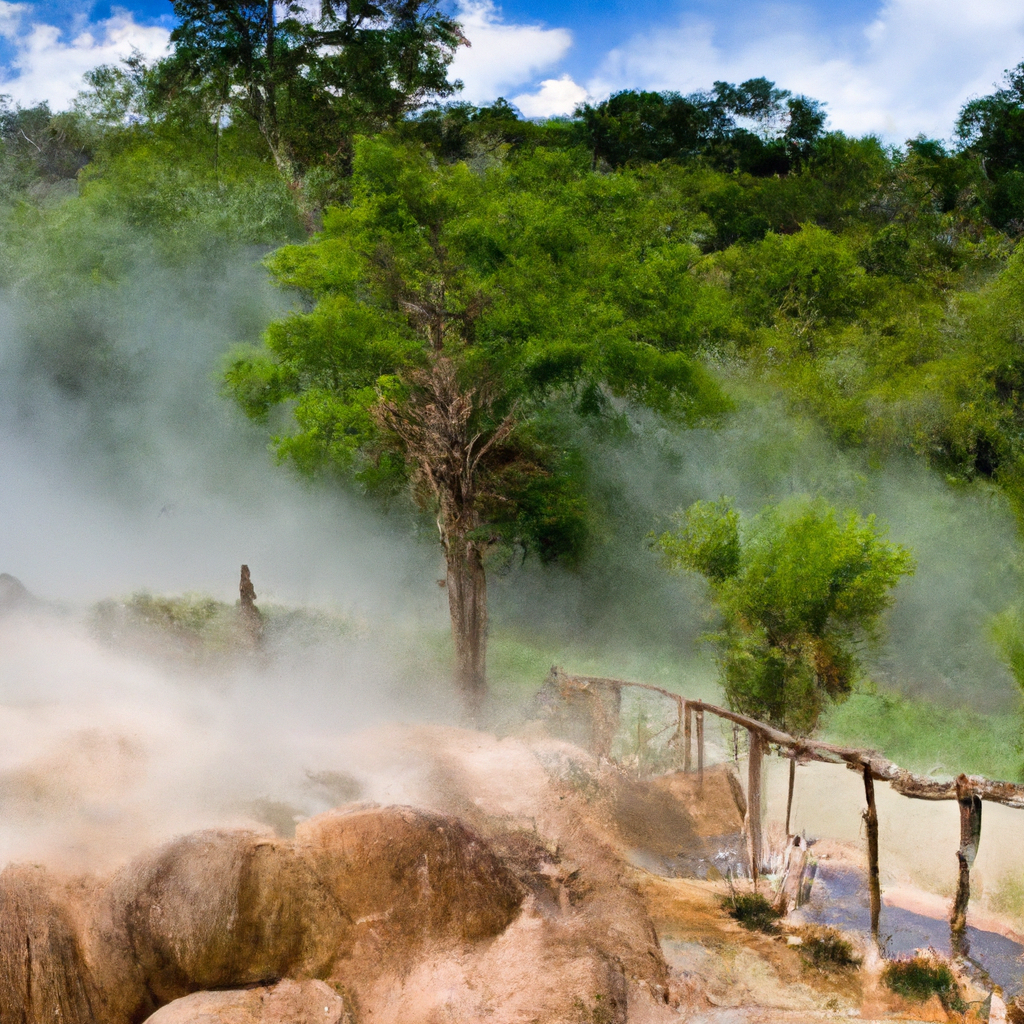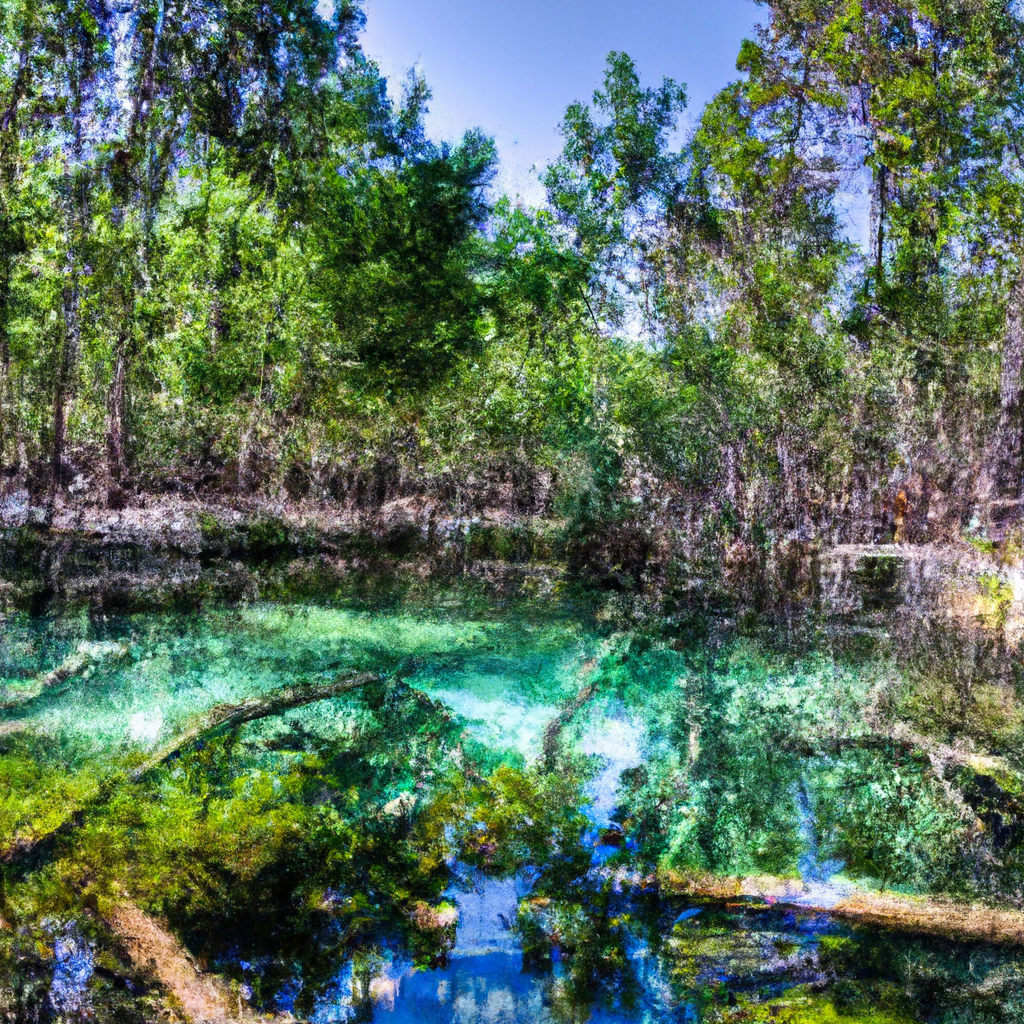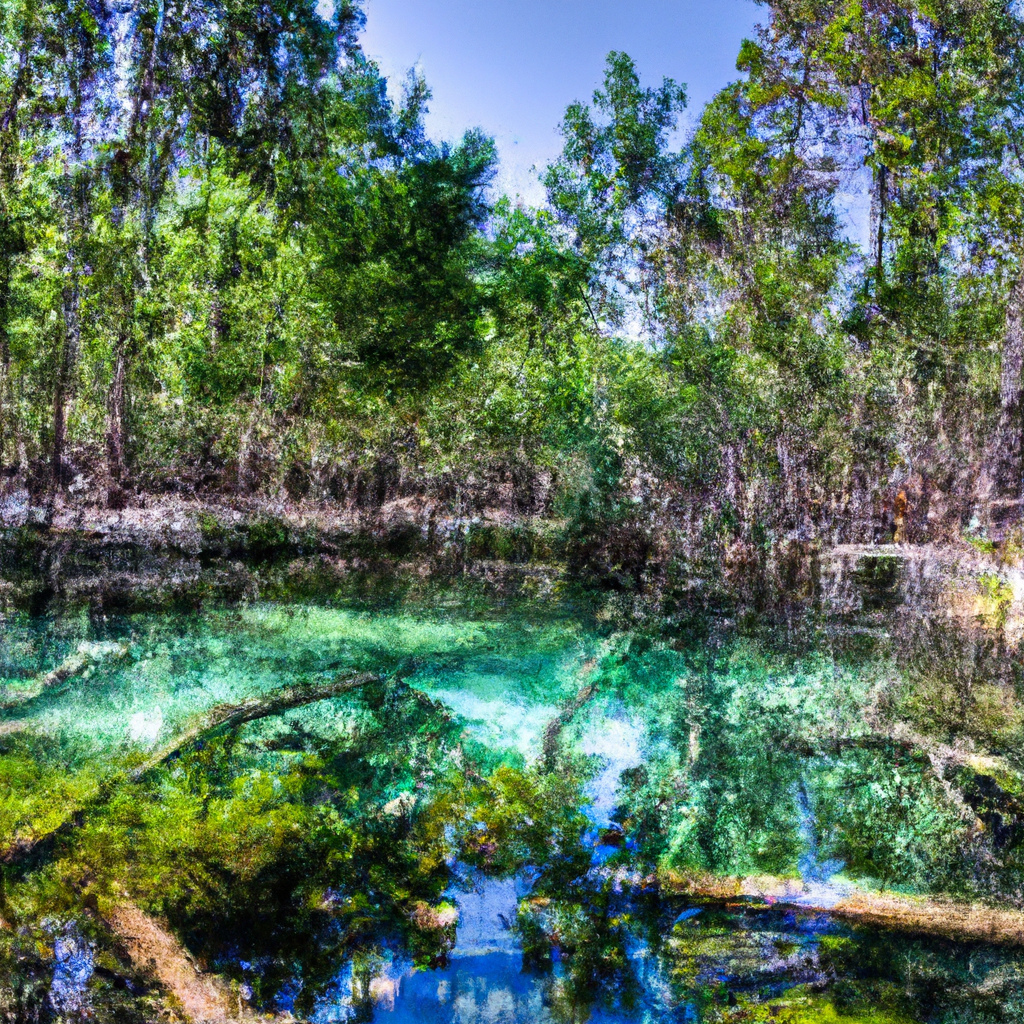Imagine immersing yourself in the soothing warmth of a natural hot spring, surrounded by the serene beauty of Texas̵7;s untamed landscapes. The healing power of nature invigorates your body and soul, offering a much-needed escape from the daily hustle and bustle. But how clean are Texas’s hot springs? In this article, we will explore the cleanliness of these natural wonders, uncovering the measures taken to ensure a safe and pristine environment for all who seek solace in their rejuvenating waters.
1. Overview of Texas’s Hot Springs
Texas is home to a number of natural hot springs, which are not only popular tourist attractions but also offer a range of health benefits. These hot springs are formed by natural geothermal activity, where groundwater is heated by the Earth’s crust and then rises to the surface. The warm water found in these springs contains various minerals, such as calcium, magnesium, and lithium, which are believed to have therapeutic effects on the body.
1.1 Natural formations
Texas’s hot springs are formed due to the state’s unique geological features. The presence of fault lines and underground reservoirs of hot water contribute to the formation of these natural wonders. Depending on the location, the temperature of the water in these hot springs can range from lukewarm to extremely hot.
1.2 Locations across the state
Hot springs can be found in different regions of Texas, offering visitors a diverse range of experiences. Some of the notable hot springs in the state include Barton Springs in Austin, Chinati Hot Springs in Marfa, and Balmorhea State Park in Balmorhea. Each location offers its own unique charm and natural beauty, making it a haven for nature lovers and adventure seekers.
1.3 Popularity and tourist attractions
The hot springs of Texas have gained popularity among both locals and tourists due to their perceived health benefits and natural beauty. Many visitors seek out these hot springs to relax, unwind, and rejuvenate amidst the serene surroundings. In addition to soaking in the warm mineral-rich waters, tourists can also enjoy activities such as hiking, camping, and wildlife spotting, as many of the hot springs are situated in scenic areas with ample recreational opportunities.
2. The Importance of Cleanliness in Hot Springs
While Texas’s hot springs provide a therapeutic and relaxing experience, it is crucial to maintain a high level of cleanliness to ensure the health and safety of visitors and preserve the natural ecosystem.
2.1 Health benefits and risks
Hot springs are often touted as natural healing sources due to their mineral content, which is believed to have various health benefits. These minerals can help improve blood circulation, relieve muscle and joint pain, and even alleviate stress and anxiety. However, if the hot springs are not properly maintained and contaminated, they can pose health risks. Bacterial infections, skin irritations, and the ingestion of harmful pathogens are some of the potential risks associated with unclean hot springs.
2.2 Impact on the ecosystem
Maintaining cleanliness in hot springs is not only essential for human health but also for the preservation of the surrounding ecosystem. Contaminants from pollutants, chemicals, and human activities can seep into the hot springs and disrupt the delicate balance of the environment. This can negatively impact aquatic life, vegetation, and overall biodiversity in and around the hot springs.
2.3 Maintenance and sanitation practices
To ensure the cleanliness and safety of hot springs, regular maintenance and sanitation practices are necessary. This includes cleaning the areas surrounding the hot springs, monitoring water quality, and implementing measures to prevent contamination. It is crucial for hot spring operators, park management organizations, and visitors to follow proper guidelines and protocols to maintain cleanliness and minimize any adverse impacts on the environment.

3. Regulatory Bodies and Standards
In Texas, hot springs are subject to regulations and oversight by various regulatory bodies to safeguard the health of visitors and the environment.
3.1 Texas Commission on Environmental Quality (TCEQ)
The Texas Commission on Environmental Quality (TCEQ) is the primary regulatory body responsible for protecting and maintaining the quality of the state’s water resources. The TCEQ establishes standards and guidelines for water quality and ensures that hot springs comply with these regulations. The commission also conducts regular inspections and monitoring to assess the cleanliness and safety of hot springs across the state.
3.2 State and local regulations
In addition to the TCEQ, hot springs in Texas are subject to state and local regulations that govern their operation and maintenance. These regulations may include requirements for water treatment, waste management, and sanitary practices. Local health departments and park management organizations play a crucial role in enforcing these regulations and ensuring compliance.
3.3 Compliance and enforcement
Compliance with regulations is essential to maintain cleanliness in hot springs. Hot spring operators and management organizations are responsible for adhering to the prescribed standards and guidelines. Violations or non-compliance can lead to penalties, closure of facilities, or legal actions. Regular inspections and enforcement actions by regulatory bodies help to ensure that hot springs meet the necessary cleanliness and safety standards.
4. Monitoring and Testing Procedures
To assess the cleanliness and quality of hot springs in Texas, thorough monitoring and testing procedures are in place.
4.1 Water quality assessments
Regular water quality assessments are conducted to evaluate the cleanliness and chemical composition of hot spring waters. These assessments involve collecting water samples from different areas of the hot springs and analyzing them in a laboratory. Parameters such as pH levels, temperature, dissolved oxygen, and minerals are measured to determine the quality of the water and potential contaminants.
4.2 Microbiological testing
Microbiological testing is crucial to identify the presence of harmful bacteria, viruses, or other pathogens in hot springs. Samples are collected from the water and tested for indicators of fecal contamination, such as Escherichia coli (E. coli). These tests help determine if the water is safe for visitors and if any corrective actions are required to maintain cleanliness.
4.3 Chemical analysis and mineral content
Chemical analysis of hot spring waters is conducted to determine the mineral content and overall chemical balance of the water. This analysis helps establish the therapeutic value of the hot springs and also identifies any potential contaminants that may have entered the water. Heavy metals, toxins, and pollutants are among the substances monitored through chemical analysis to ensure the cleanliness and safety of hot springs.

5. Sources of Contamination
Hot springs in Texas can be susceptible to various sources of contamination that can compromise their cleanliness and safety.
5.1 Natural pollutants
Natural pollutants, such as algae, sediment, and organic matter, can enter hot springs through natural processes. These pollutants can affect the water quality and clarity, making the hot springs less inviting and potentially posing health risks. While natural pollutants are a part of the ecosystem, their excess can result in an imbalance and negatively impact the cleanliness of hot springs.
5.2 Human activities and pollution sources
Human activities in and around hot springs can contribute to contamination. Improper waste disposal, littering, and the use of soaps or shampoos in the water can introduce pollutants into the hot springs. Additionally, nearby industries or agricultural practices can release chemicals, pesticides, and other pollutants into the surrounding environment, which can seep into the hot springs through groundwater or runoff.
5.3 Effects of nearby industries or agriculture
The presence of nearby industries or intensive agriculture can pose a significant threat to hot springs. Pollution from factories, mining operations, or agricultural practices can contaminate the water sources that feed into the hot springs. These pollutants can include heavy metals, chemicals, and toxins, which can severely impact the cleanliness and safety of the hot springs. Strict regulations and monitoring are necessary to mitigate these potential sources of contamination.
6. Common Contaminants Found in Texas’s Hot Springs
Despite efforts to maintain cleanliness, hot springs in Texas can still be affected by various contaminants that can compromise the water quality and safety.
6.1 Bacteria and pathogens
Bacteria and pathogens are common contaminants found in hot springs. These can include Escherichia coli (E. coli), Giardia, and other harmful microorganisms that can cause illnesses if ingested or come into contact with open wounds. Proper water treatment, monitoring, and adherence to sanitation practices are essential in minimizing these contaminants and ensuring the health of visitors.
6.2 Heavy metals and toxins
Hot springs can also be susceptible to the presence of heavy metals and toxins, which can enter the water from nearby industrial or mining activities. Heavy metals such as lead, mercury, and arsenic can pose significant health risks if present in high concentrations. Monitoring and water treatment processes are crucial in reducing the levels of heavy metals and toxins and maintaining cleanliness in hot springs.
6.3 Pesticides and herbicides
Pesticides and herbicides from nearby agricultural practices can find their way into hot springs through groundwater contamination or runoff. These chemicals can negatively impact the water quality and pose potential health risks to visitors. Strict regulation of agricultural practices, water monitoring, and treatment are necessary to prevent the presence of pesticides and herbicides in hot springs.
7. Health and Safety Recommendations
To ensure a safe and enjoyable experience at Texas’s hot springs, visitors should adhere to certain health and safety recommendations.
7.1 Precautions for visitors
Visitors to hot springs should always exercise caution and follow safety guidelines. It is essential to respect the natural environment, avoid disturbing wildlife, and stay on designated paths or areas. Visitors should also take care to avoid consuming hot spring water and be aware of potential risks and hazards associated with hot springs, such as slippery rocks or variable water temperatures.
7.2 Proper hygiene and etiquette
Maintaining proper hygiene and etiquette is crucial to preserve the cleanliness of hot springs. Visitors should avoid using soaps, shampoos, or other personal care products in hot spring waters. Additionally, it is important to shower before entering the hot springs to remove any residual chemicals or contaminants from the body. Proper disposal of waste and litter is also essential to prevent pollution and maintain the pristine nature of the hot springs.
7.3 Special considerations for vulnerable individuals
Vulnerable individuals, such as pregnant women, young children, and those with compromised immune systems, should exercise caution when visiting hot springs. These individuals are more susceptible to infections or adverse reactions and should consult with their healthcare providers before entering hot spring waters. It is crucial to prioritize the health and safety of all visitors, and special precautions may be necessary for those with specific health concerns.
8. Measures to Maintain Cleanliness
To ensure the ongoing cleanliness and sanitation of hot springs in Texas, various measures and practices are implemented.
8.1 Water treatment and filtration
Water treatment and filtration systems play a vital role in maintaining the cleanliness of hot springs. These systems help remove or reduce contaminants, such as bacteria, pathogens, and heavy metals, from the water. Filtration processes, such as sand filters or activated carbon filters, help remove impurities and improve water clarity. Regular maintenance and monitoring of these systems are necessary to ensure their effectiveness.
8.2 Regular cleaning and maintenance
Regular cleaning and maintenance of hot springs and their surrounding areas are essential to maintain cleanliness. This includes removing debris, algae, and sediment from the water and ensuring the cleanliness of facilities such as changing rooms or restrooms. Proper waste management practices, including the regular emptying of waste bins and the proper disposal of sewage or wastewater, are also crucial in preserving cleanliness.
8.3 Education and awareness campaigns
Education and raising awareness among visitors, hot spring operators, and the local community are key to maintaining cleanliness. Informing visitors about the importance of preserving the natural environment, practicing proper hygiene, and following guidelines for hot spring usage can promote responsible behavior. Additionally, educational campaigns can highlight the significance of minimizing pollution from nearby industries or agriculture and the importance of protecting the hot springs for future generations.
9. Case Study: Cleanest Hot Springs in Texas
While all hot springs in Texas strive to maintain cleanliness, there are a few notable examples that are widely recognized as some of the cleanest in the state.
9.1 Barton Springs in Austin
Barton Springs, located within Zilker Park in Austin, is renowned for its crystal-clear water and pristine surroundings. The pool is fed by natural springs and features a system of dams that help maintain water quality. Regular cleaning and maintenance practices, including debris removal and sediment control, are implemented to ensure the cleanliness of Barton Springs. The pool’s popularity has led to a strong community effort to preserve and protect its cleanliness, making it one of the cleanest hot springs in Texas.
9.2 Chinati Hot Springs in Marfa
Chinati Hot Springs in Marfa is known for its remote location and untouched beauty. The hot springs are geothermally heated and offer a tranquil and serene atmosphere for visitors. The management of Chinati Hot Springs prioritizes cleanliness, regularly testing the water and ensuring proper filtration and water treatment systems are in place. With minimal human activity in the area, the hot springs maintain their cleanliness and offer visitors a truly pristine experience.
9.3 Balmorhea State Park in Balmorhea
Balmorhea State Park is home to one of the largest spring-fed pools in the world. The natural spring water flows into the pool, which is carefully maintained and monitored to ensure cleanliness. The filtration system in the pool helps maintain water clarity and prevents the buildup of contaminants. Balmorhea State Park is committed to preserving the natural environment and educating visitors about the importance of cleanliness and conservation.
10. Future Challenges and Opportunities
While Texas’s hot springs continue to provide a unique and treasured experience for visitors, they face several challenges and opportunities for the future.
10.1 Urban development and population growth
The rapid urban development and population growth in Texas present challenges to preserving the cleanliness of hot springs. Increased human activity and the demand for natural resources place additional pressure on the surrounding environment. It is crucial to implement sustainable development practices, along with stricter regulations and monitoring, to mitigate the potential negative impacts of urbanization on hot springs.
10.2 Climate change and water availability
Climate change poses significant challenges to the cleanliness and availability of hot springs. Shifts in precipitation patterns, rising temperatures, and changes in groundwater recharge can all affect the quality and quantity of water in hot springs. Addressing climate change through sustainable water management practices and reducing carbon emissions is vital to maintain the long-term cleanliness and health of these natural wonders.
10.3 Balancing tourism and conservation efforts
The growing popularity of hot springs has led to increased tourism, which can put additional strain on the cleanliness and preservation of these natural resources. Balancing tourism and conservation efforts is essential to ensure the longevity and sustainability of hot springs. Implementing visitor management plans, promoting responsible tourism practices, and educating visitors about the importance of cleanliness and conservation can help strike a balance between enjoying these natural wonders and preserving them for future generations.
In summary, Texas’s hot springs offer not only a calming and rejuvenating experience but also the opportunity to connect with the healing power of nature. However, maintaining cleanliness in hot springs is paramount to ensure the health and safety of visitors and the preservation of the natural environment. Through regulatory bodies, monitoring and testing procedures, and the implementation of various measures, Texas’s hot springs strive to provide a clean and enjoyable experience for all. With ongoing efforts and awareness, these natural wonders can continue to invigorate the body and soul while safeguarding their cleanliness for generations to come.
